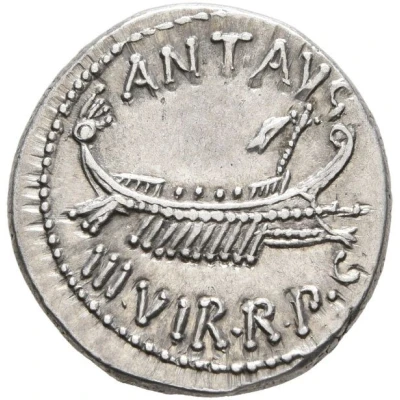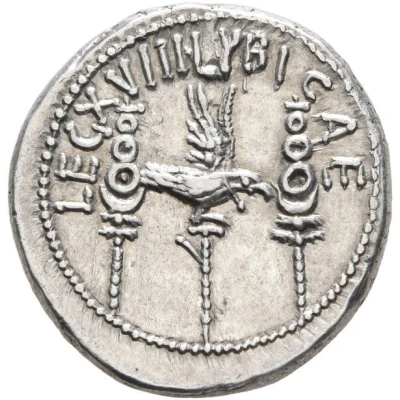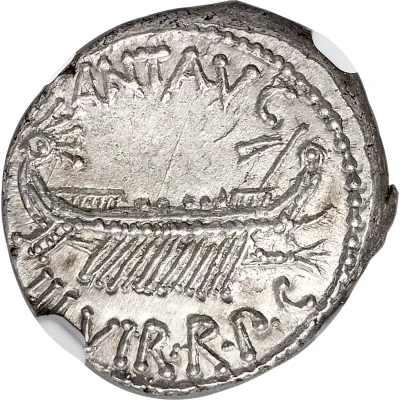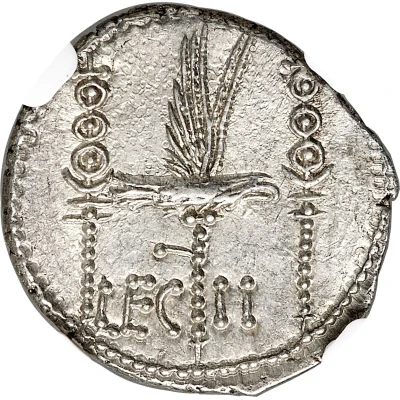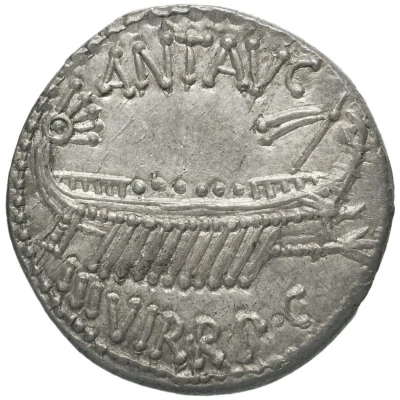
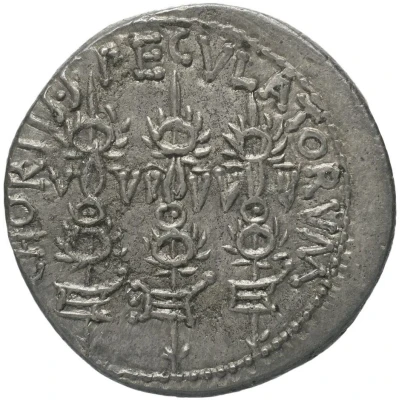

© Bibliothèque nationale de France / Gallica
Denarius - Mark Antony ANT·AVG III·VIR·R·P·C / CHORTIS·SPECVLATORVM 32 BC - 31 BC
| Silver | 3.75 g | 18 mm |
| Issuer | Rome › Roman Republic (509 BC - 27 BC) |
|---|---|
| Period | Republic (509 BC - 27 BC) |
| Triumvir | Mark Antony (Marcus Antonius) (43 BC - 32 BC) |
| Type | Standard circulation coin |
| Years | 32 BC - 31 BC |
| Value | Denarius (1) |
| Currency | Denarius of 16 Asses (141 – 27 BC) |
| Composition | Silver |
| Weight | 3.75 g |
| Diameter | 18 mm |
| Shape | Round (irregular) |
| Technique | Hammered |
| Orientation | Variable alignment ↺ |
| Demonetized | Yes |
| Updated | 2024-10-06 |
| Numista | N#384187 |
|---|---|
| Rarity index | 100% |
Reverse
Three standards, each decorated with two wreaths and prow. Border of dots.
Script: Latin
Lettering: CHORTIS•SPECVLATORVM
Comment
Mass varies: 2.37–3.99 g;Diameter varies: 16–19 mm;
The 'Cohors Speculatorum' was a special army unit created by Antony, consisting of the so-called speculatores, men who served as spies, scouts, messengers, and explorers. Normally, each legion had ten such speculatores, but by forming a separate cohort, Antony had a cadre of such men at his direct disposal, no luxury in times of bitter civil strife. The function continued to exist under the Empire, where the speculatores served as messengers and bodyguards to Rome's emperors and generals. Curiously, the aquilae on the reverse of Antony's denarii are decorated with wreaths and prows. The latter in particular may refer to their task of manning the turrets on war galleys as lookouts.
Interesting fact
One interesting fact about this coin is that it features an image of Mark Antony, one of the most powerful Roman generals and politicians of the 1st century BC, who played a crucial role in the transformation of the Roman Republic into the Roman Empire. The coin was minted during his reign as Consul in 32 BC, just a year before his famous battle against Octavian (later known as Augustus Caesar) at the Battle of Actium, which marked the end of the Roman Republic and the beginning of the Roman Empire.
